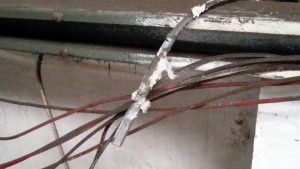
Sprayed Thermal Coating Removal must be undertaken by a professional, licensed asbestos contractor, under fully controlled conditions. A regulated activity, asbestos Sprayed Thermal Coating Removal is a hazardous activity. Sprayed thermals coatings are sometimes referred to as flock or limpet.
The composition of asbestos flock makes it very friable, meaning that fibres are easily released. Just brushing against Sprayed Thermal Coating may release those hazardous fibres into the surrounding environment. To the untrained eye, Sprayed Thermal Coatings can appear fluffy and people can often underestimate the dangerous nature of the material.
How were Sprayed Thermal Coatings applied?
Sprayed Thermal Coatings were sprayed onto the surface of walls and beams. It was used due to fire retardant properties, especially between rooms or workshops and office areas.
How does Sprayed Thermal Coating Removal take place?
Sprayed Thermal Coatings must be removed under fully controlled conditions, within a double-skinned enclosure using negative pressure units, airlocks and specialist decontamination units. Operatives must wear full PPE/RPE including full-face masks and be fully trained in asbestos removal activities.
Are there any other options than removing Sprayed Thermal Coatings?
Yes. Asbestos Encapsulation can be carried out in many cases to seal the asbestos containing material from the environment. The process of asbestos encapsulation involves sealing the asbestos flock with specialist glues, coverings and paints. Although this process is less labour intensive than removing the flock, it must still be carried out under fully controlled conditions by a licensed asbestos contractor.



